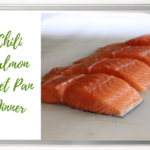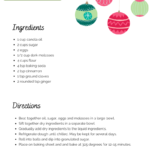Are you confused about what you need to do now that you have diabetes or prediabetes?
You may even feel overwhelmed that you have more to do in your day. Take a deep breath. You don’t have to be perfect and do everything today. You can ease into it. But do pay attention and move forward.
Here are a few things that can have a big impact and help you reach your goals.
1. Have a positive mindset. Did you know that getting diabetes or prediabetes is not your fault? It’s not. Diabetes is genetic, even if you don’t know anyone in your family with it. It runs in families and then something triggers it. If you have diabetes, the goal is to have your glucose close to normal. If you have prediabetes, the goal is to lose weight, be physically active and reverse your glucose back to normal if possible. Either way, you need to be positive and take action. Being overwhelmed can be paralyzing. Thinking you can’t make changes keeps you stuck. You can do anything you make up your mind to do. I’ve seen it over and over.

2. Cut down or cut out sugar sweetened drinks. There is a lot of sugar in sweet tea, coffee drinks, energy drinks, soft drinks and juices. By a lot I mean about 10 teaspoons of sugar in a 12 ounce can of regular soft drink. This one change will save calories and lower your glucose. If you want a sweet taste, sugar substitutes are an option. There is no scientific evidence that diet drinks and sugar substitutes cause problems (even though there is a lot of hype and misinformation out there). Of course it’s up to you what you choose. Just don’t be afraid of sugar substitutes.
3. Physical activity of any kind can help lower your glucose. Exercise helps just about everything, but most Americans don’t meet the guidelines of at least 30 minutes a day of moderate intensity exercise most days of the week. The key is to schedule it into your day and make it part of your routine. Decide to do it, even when you don’t feel like it. Start with where you are. For some, 5 minutes is a challenge. Be successful meeting a small goal and increase it as you become more fit. Moderate intensity means you are working hard enough that you can’t sing a song but you are able to say a sentence. You can even split the 30 minutes up into 10-15 minute segments if needed. You may end up saving money by taking less medicine if you can establish a consistent habit of adequate exercise.
4. If you have been prescribed medicine for diabetes, take it. Or talk to your health care provider about any concerns. Most people I meet don’t want to take medications. However, there are tools that can help you meet your glucose targets. It is when your glucose is not in a safe range, that you are at risk for complications.
5. You may have been told to monitor your glucose to provide feedback to your healthcare provider. As you learn more about diabetes, monitoring can be useful to you too. It is recommended that the healthcare provider individualize the target glucose goals. If you have not been told targets, here are the general targets recommended by the American Diabetes Association:
-
-
- Fasting or pre-meal 80-130 mg/dl
- 2 hours after meal* ≤180 mg/dl
-
* after start of meal
Know this fact – It is impossible to have all your glucose readings in range. Thankfully that is not the goal. The goal is to have enough of them in range, or close to the range, that the glucose does not damage the blood vessels and nerves which causes complications like heart attack, stroke, neuropathy (nerve damage), kidney failure, blindness, and amputations.
There are many things that affect your glucose levels. It’s not just about the food. Sometimes your glucose may be out of target despite you doing everything you know to do. Many people feel bad about themselves when they see high blood sugars. It’s best to think of your glucose level as data. It is not an indication of your worth. It definitely doesn’t mean you are a failure.
However, if your glucose is consistently above the target level, contact your healthcare provider about your concern. You may need an adjustment to your treatment plan.
In case you were wondering, people with prediabetes don’t need to monitor because you are making enough insulin.
Remember everyone would benefit from eating healthy and moving at least 30 minutes a day at a moderate level. It’s good for us all. You can be healthy, despite having diabetes or prediabetes. Now is the time. It won’t be easier later.






Your advice to get rid of soft drinks, juices, sweet tea, and other drinks with a lot of sugar would be important. In order to change your diet effectively, it would probably be a good idea to find a diabetes nutritionist. This way, you can have an experienced professional take a look at what you’re currently eating to help you see what you need to take out and find substitutes that will give you drinks and food you’ll enjoy but won’t cause a problem for your condition.
I totally agree! That’s what I love to help people with! Thanks for replying Erika!
Also, plain old hydration can help lower highs.